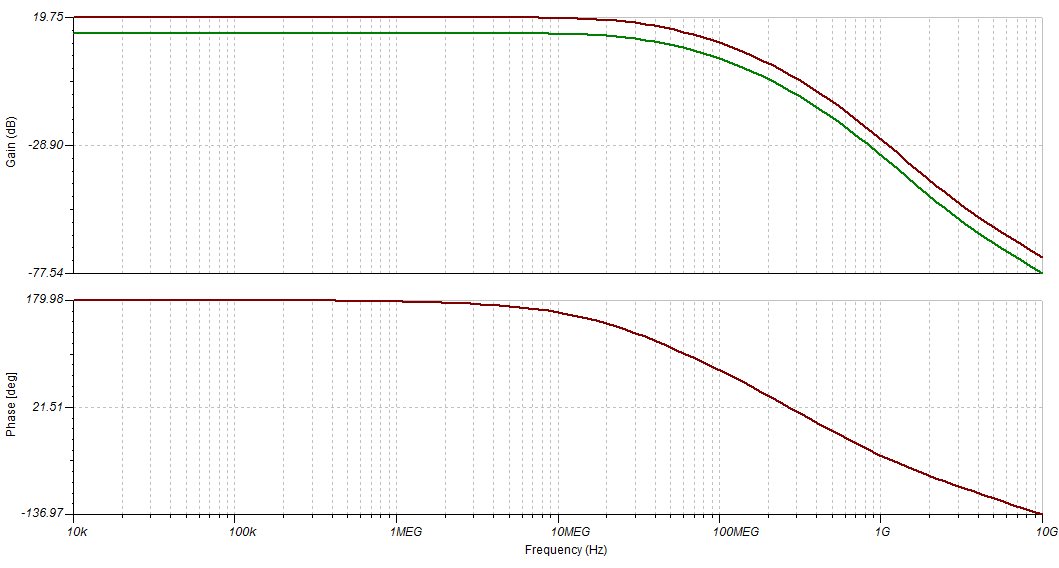Other Parts Discussed in Thread: THS4503
Hi
I wanted to achieve a gain of 10 by changing the feed back resistors to 1.3K and 118 Ohms as suggested. The input voltage maximum is 1V peak to peak @ 100MHz. I have done multiple test cases.
Case 1: Original EVM
I have tested to THS4503EVM, by giving a single ended input of voltage of 1Vpeak to peak @ 100MHz (using 50Ohm cable) as suggested in the user guide. The output voltage @ Vout+ and Vout- is equal to 520mV peak to peak wheareas at the single ended output after the transformer is 90mV peak to peak. Since the gain is 1, we must get the same or similar output @ Vout+ and Vout- .
Case 2: Removed the input termination resistor (RT = 50Ohms) on the Vin- input (Since the source impedance is already 50Ohms). The output voltage @ Vout+ and Vout- is equal to 1V peak to peak and at the single ended output after the transformer is 170mV peak to peak. I see we here we get 1V peak to peak output on Vout+ and Vout-. However, I am unsure why am not getting double the output power at the single ended output, i.e., at Vout after the transformer.
The output differential load resistance is set to 800Ohms using the transformer (1:4) transformer, is this load reducing output gain (attenuating instead of gain).
What is the best way to achieve a 50Ohm impedance at the output of Vout, and double the voltage swing.
Thanks
Venu


